Recent Posts
Ticks are back!
3/17/2025 (Permalink)
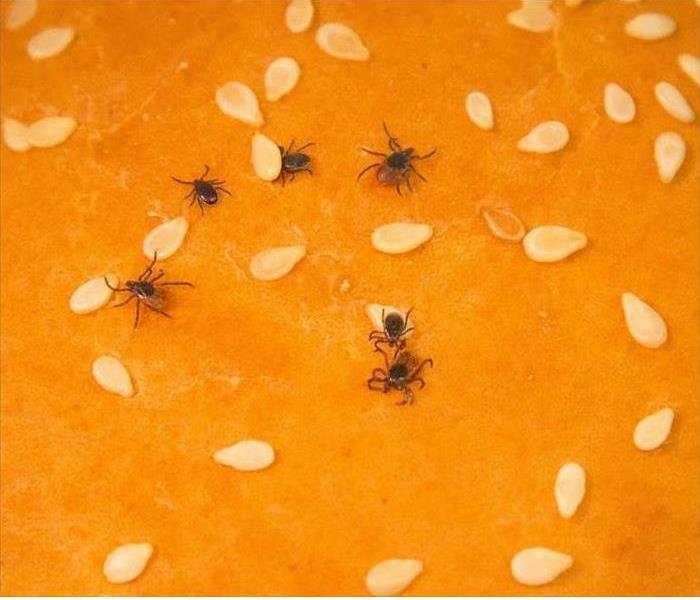 Photo of male and female adult blacklegged ticks on a sesame seed bun to demonstrate relative size. Photo credit: CDC
Photo of male and female adult blacklegged ticks on a sesame seed bun to demonstrate relative size. Photo credit: CDC
The warm weather is returning and the sun is shining, that means more time spent outdoors. After being cooped up for the long Winter months, it's refreshing to be able to get back out there!
We are not the only thing to settle down for the Winter, only to reemerge when the melting and thawing are over.
Ticks!
This is the time of year when ticks rear their ugly little heads and we need to be ready for them!
According to the CDC tick exposure can occur year-round, but ticks are most active during warmer months (April-September).
Knowing which type of tick is common in your local region can help you to determine what steps are best at preventing tick bites.
The most common ticks to inhabit the Northeast are listed below.
American Dog and Brown Dog tick
Widely distributed east of the Rocky Mountains. Also occurs in limited areas on the Pacific Coast.
Transmits: Tularemia and Rocky Mountain spotted fever.
The highest risk of being bitten occurs during spring and summer. Dog ticks are sometimes called wood ticks. Adult females are most likely to bite humans.
Blacklegged tick (AKA Deer Tick)
Widely distributed across the eastern United States.
Transmits: Borrelia burgdorferi and B. mayonii (which cause Lyme disease), Ana plasma phagocytophilum (anaplasmosis), B. miyamotoi disease (a form of relapsing fever), Ehrlichia murus acariasis (ehrlichiosis), Babesia microti (babesiosis), and Powassan virus (Powassan virus disease).
The greatest risk of being bitten exists in the spring, summer, and fall. However, adults may be out searching for a host any time winter temperatures are above freezing. Stages most likely to bite humans are nymphs and adult females.
So, how can we best avoid these guys while still enjoying the great outdoors? We should first know where to expect ticks.
Ticks live in grassy, brushy, or wooded areas, or even on animals. Spending time outside walking your dog, camping, gardening, or hunting could bring you in close contact with ticks. Many people get ticks in their own yard or neighborhood.
Treat clothing and gear with products containing 0.5% permethrin. Permethrin can be used to treat boots, clothing and camping gear and remain protective through several washings.
*If you are an avid camper or hiker you can buy permethrin-treated clothing and gear.
Use a chemical repellent with DEET, permethrin or picaridin.
Wear light-colored protective clothing.
Tuck pant legs into socks.
Avoid tick-infested areas if possible and stick to the middle of trails when walking them.
Make sure to check yourself and your pets as soon as you come in. It's important to check your clothing as well because ticks may be carried into the house on them and any gear that you or your pet may be wearing.
Any ticks that are found should be removed.
You can tumble dry clothes in a dryer on high heat for 10 minutes to kill ticks on dry clothing after you come indoors.
If the clothes require washing first, hot water is recommended. Cold and medium temperature water won't kill ticks.
The CDC recommends showering within 2 hours of coming inside because it has shown to reduce the risk of getting Lyme disease as well as other tick born diseases. It will also help to wash away any ticks that haven't latched on yet and gives you the opportunity to do an all over body check.
When doing a body check on yourself or your children, pay attention to these areas:
Under the arms
In and around the ears
Inside belly button
Back of the knees
In and around the hair
Between the legs
Around the waist
Let's look forward to a fun and active Summer free of ticks!!
Fire Prevention
1/24/2025 (Permalink)
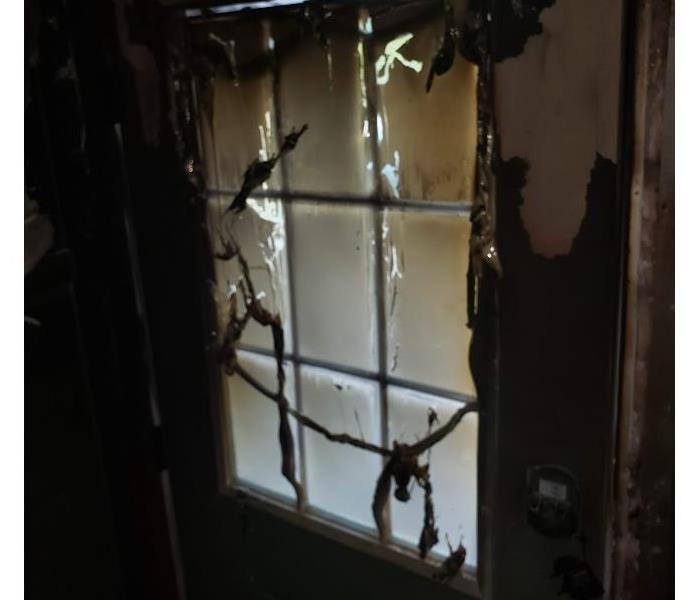 Fire prevention
Fire prevention
Fire Prevention Week and Beyond.
The weather is turning colder here in the Northeast!
We have to remain vigilant with our fire safety. Here are some tips on staying on top of all things fire related.
Protect Your Family with Smoke Detectors
Installing and maintaining smoke detectors is still the most important step you can take to protect your family from fire death or injury.
The detector should be no more than ten years old. You can check the date on the back of the unit. Test the batteries monthly, and replace often. Install them in all bedrooms, hallways outside bedrooms, and on each level of your home.
There are two types of smoke detectors: photoelectric and ionization. Photoelectric works better with slower, smoldering fires, while the ionization type is more suited to faster, flaming fires. Most experts recommend that you have both in your home.
Have an Escape Plan:
Take the time to plan an escape route for everyone in the home, designating a meet up spot outside.
The key to any escape plan is practice!
Kids love games and challenges. Record the time it takes everyone to make it from their beds to the meetup spot, and then try to beat that time.
The more often you practice, the more likely your children are to follow the plan, rather than freeze in panic or confusion when every second counts. Set your calendar to remind you to practice monthly.
Fire Extinguishers are a must!
Two out of five home fires begin in the kitchen. Never leave a kitchen when food is cooking, especially on the burners. ALWAYS keep a fire extinguisher close by!
Have your chimneys cleaned regularly, and be very careful with portable space heaters. Make sure they are several feet away from drapes, clothing, or anything that could catch fire.
Never smoke in bed or while lying down.
Inspect your appliance cords. If any are torn, ripped, or damaged in any way, replace them immediately. If a cord or plug ever feels hot, unplug it.
Prevention is the key to your safety
How do I know if there is water damage in my home?
9/27/2023 (Permalink)
How to Check your home for Water Damage
Whether you've just been through a storm or are doing regular maintenance on your home, checking for water is always a good thing!
Don't wait until a BIG disaster happens!
Taking the time to complete the steps below periodically; Can save you from that big disaster and will keep that hard earned cash in your pocket!!
Step 1 - Check the Walls
The easiest sign of water damage to spot is water stains on the walls and ceilings.
Also check around the window and door frames for stains. Any unusual stains should be taken seriously, as they could be a sign of a leaky pipe or drain inside the wall.
Also look for cracks in the drywall and bubbling under the paint. An area of wall that has been exposed to water can also have a swollen appearance and be soft to the touch.
Step 2 - Check the Floors
Water damage can happen to any type of flooring and can also seep down to the sub floor. Look for any warping or buckling of the floors, especially in the basement. If the floor looks warped, water damage is most likely the cause.
Step 3 - Check the Pipes
Inspect the piping in the kitchen, bathrooms, laundry room, and basement for corrosion around the pipe connections, leaks, or water stains. Inspect the caulking around the bathroom fixtures. Missing or loose caulking could be caused by water seepage. Look for missing grout or signs of mold. Check the water heater for wet spots on the floor and rust on the tank.
Step 4 - Check the Basement
Basement leakage is a common problem found in houses.
Water in the basement often causes damage to the flooring, baseboards, walls, and furniture. Additionally, odors caused by mold and mildew can be unpleasant and even cause health problems.
Inspect for cracks, stains, rust, dampness, mold, and odors. If you have drywall in your basement, Water can wick up it. Check all drywall for signs of water or water stains.
Step 5 - Check the Attic
Check the attic for stains, mold, and other signs of leaks.
Pay special attention to the valleys where 2 roof planes come together, the flashing where the roof meets the walls, and the flashing around roof vents and chimneys.
The insulation should be dry and in good condition. Houses located in cold climates can develop ice dams on the roof, which cause water to leak into the attic from melting snow and ice on the roof. Also make sure that attic ventilation is sufficient.
Step 6 - Check the Exterior
Make sure to check the exterior of the house as well. Check the roof for damaged flashing and missing, cracked, or curled shingles.
If you see standing water anywhere outside the home, it could be the sign of a problem. A puddle could be due to poor drainage in the yard, leaky rain gutters, or gutter spouts that don t take water far enough from the house.
The house should be situated on the highest point of the property, with the ground sloping away from the house.
If you see any signs of water damage in your home; call 1-603-298-6942 today. Don't let that small amount of water become a HUGE problem for you!
Got graffiti?
9/27/2023 (Permalink)
Is graffiti keeping people away from your business?
Graffiti is a form of visual communication, usually illegal, involving the unauthorized marking of public space by an individual or group.
Although the common image of graffiti is a stylistic symbol or phrase spray-painted on a wall by a member of a street gang, some graffiti is not gang-related.
Graffiti can be understood as antisocial behavior's performed in order to gain attention or as a form of thrill seeking, but it also can be understood as an expressive art form.
Graffiti can also be an eyesore on your business and can keep people from entering or using your business!
Does your business or home need some TLC on the outside?
Did you know that SERVPRO will come out and clean up any graffiti or vandalism on your business or home?
In addition to removing spray-painted graffiti from exterior walls, we can also clean driveways, walkways, asphalt, metals, wood, glass, plastic, and masonry.
Like it never even happened.
Should I have my duct work cleaned?
9/30/2022 (Permalink)
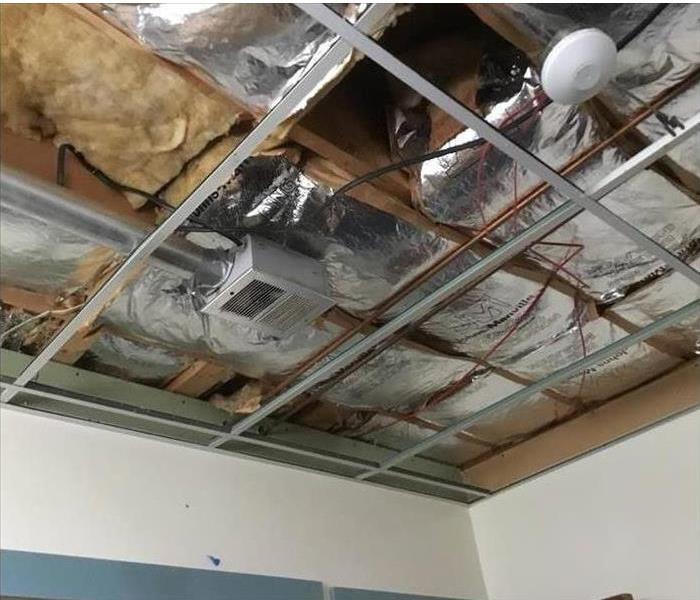 Is your duct work dirty?
Is your duct work dirty?
Is my duct work dirty? Should I have it checked?
The ventilation system within your commercial space is key to your air quality.
Estimates made by the World Health Organization say that poor indoor air quality cost $60 Billion in employee sick leave and lost production.
Poor air quality can spread illness, cause respiratory irritation, and cause employees to feel drowsy or apathetic. In some cases, it can spread illness and cause employees to become sick frequently.
You don’t want to keep the air in your commercial space too dry nor too humid. Both ends of the humidity spectrum cause health issues and can make your staff uncomfortable. Instead, try to keep the humidity level in your building between 40 and 50 percent.
The ventilation system is often the biggest culprit in poor indoor air quality. Inspecting the ductwork must be a high priority.
In most cases, the HVAC system has been operating for some time without much attention. Dirty ducts can circulate odors, contaminants such as mold and irritating dust throughout your office building.
Another problem that affects ductwork in commercial businesses is when input and output vents become blocked by boxes, equipment, furniture or dust. This reduces the free flow of air through ducting systems and, by association, reduces air circulation throughout the entire commercial building.
Part of your responsibility to the tenants, workers, and/or students who work and play in your buildings includes proper maintenance and prompt response to any situation that could cause illness or health concerns.
SERVPRO of Claremont, Sunapee, Newfound Lake can help:
- Remediate bacteria, fungi and mold
- Reduce potential for mold growth
- Restore peak energy efficiency
- Eliminate offensive odors
SERVPRO of Claremont, Sunapee, Newfound Lake will inspect your HVAC system and ductwork. This inspection can save you money and provide peace of mind on the health of your HVAC system and ductwork.
To schedule a duct cleaning or inspection call 603-298-6942.
Like it never even happened
When water becomes a hazard
9/21/2022 (Permalink)
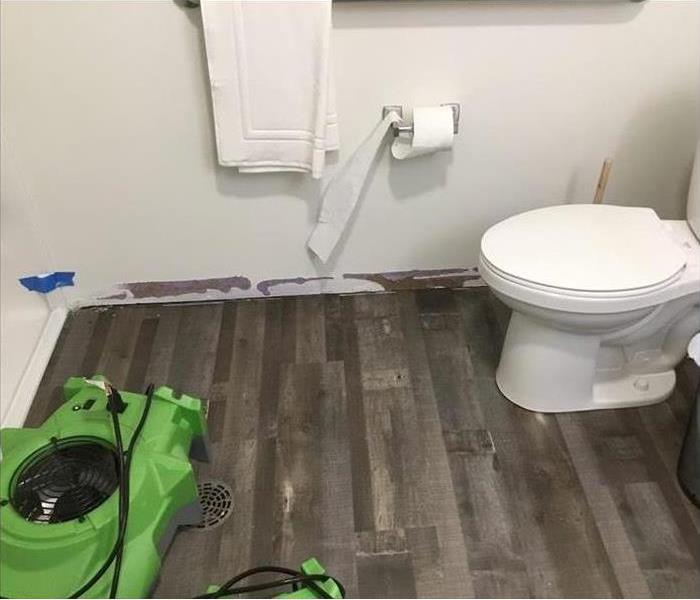 Water damage
Water damage
When water becomes a Bio Hazard!
Homeowners often don't realize that they are responsible for the maintenance and repair of their lateral sewer pipe which is the pipeline between the city sanitary sewer main (which is usually located in the street) and the building.
Sewer backups and toilet overflows can wreak havoc in your home and can create a bio hazard situation very quickly.
Sewage backup should be considered an emergency and dealt with as quickly as possible. We are the water damage restoration specialists with specific training and expertise to safely restore your home or business.
So, what are the most common causes of sewer backups?
In the Northeast we have many older homes, often times these homes can be over 100 years old and one of the causes of sewer backup is aging sewer systems.
The ASCE states that the nation's 500,000-plus miles of sewer lines are on average over thirty years old. This has caused and contributed to the rapid rise of sanitary sewer back ups, overflows and flooded basements.
Tree roots seeking moisture, small roots of trees and shrubs make their way into sewer line cracks and service pipe joints, they can cause extensive damage or blockages as they grow larger. The cost of the clean-up will fall to the problem tree's owner.
Combined pipelines cause problems to arise in systems that combine storm water and raw sewage into the same pipeline.
During many rain storms, the systems are exposed to more volume than they can handle, and the result is a sewage backup situation that allows sewage to spew out into basements and other low lying drains.
There are 3 categories of contaminated water that homeowners may have to deal with in a water leak or sewer back up scenario, they are:
Category 1: "Clean Water"
This is water from a clean source, such as a broken clean water supply line or faucet. If left untreated, category 1 water can quickly degrade into category 2 or 3 water depending upon such factors as time, temperature, and contact with contaminants.
Category 2: "Gray Water"
This water has a significant level of contamination. Sources for category 2 water may include washing machine overflow; toilet overflow with some urine, but no feces; or dishwasher overflow.
Category 3: "Black Water"
This water is grossly unsanitary and any contact should be avoided. Sources for category 3 water could include flooding from rivers or streams, water from beyond the toilet trap, water from the toilet bowl with feces, or standing water that has begun to support microbial growth.
Water can go from Category 1 to category 3 quickly if left untreated and exposed to bacteria.
Give us a call at 603-298-6942 if you are dealing with any water or sewer backup and we'll make it "Like it never even happened"
Fires during Construction and Renovations
9/21/2022 (Permalink)
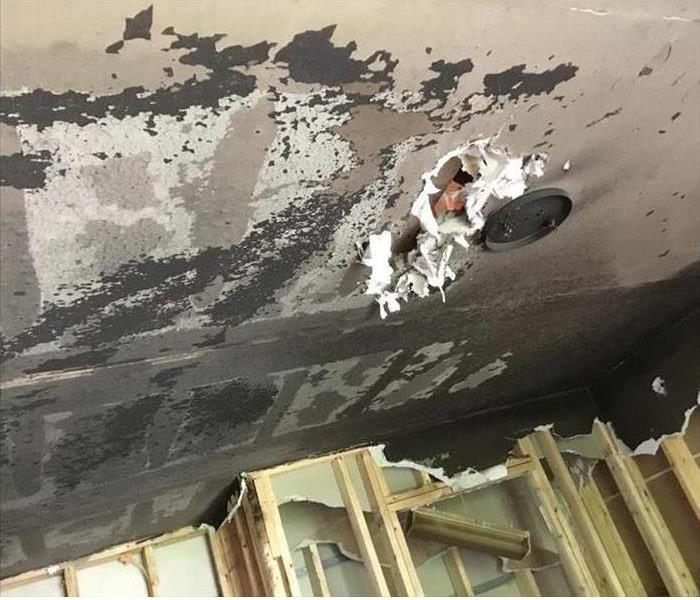 Fire at construction site
Fire at construction site
The days are longer and the weather is warmer, it's time get those construction and renovation projects underway!
Fires in structures under construction are more common than you may think.
According to the NFPA fire departments responded to an average of 3,840 fires of structures that were under construction and 2,580 fires in structures that were under major renovations per year between 2013-2017.
The cost annually for this is $304 million in direct property damage and three of every four fires in structures under construction involved residential properties.
Fire at a construction site is bound to endanger the lives of workers and anyone else on site. A fire at the site can also damage the structure and destruction of machinery and materials; ultimately putting the job at a stop and delaying the whole project.
It is imperative that every project has a clearly laid out fire protection plan and a project manager/construction manager to make sure that the plan is in place and that every one is aware of the plan and point of contact.
Fires at construction sites can start for many reasons and it is important to know fire types and how to handle each one.
Class A fires occur in wood, rubber, paper,cloth and most plastics. The most effective type of extinguishing agent is one using water, or solutions containing large concentrations of water,because the ‘‘quenching-cooling’’ effect reduces the temperature of the burning material below its ignition temperature. Fire extinguishers suitable for this type of fire are designated with a classification of “A” on the label
Class B fires occur in flammable or combustible liquids, such as petroleum products and greases.
A “blanketingsmothering” effect of an agent that excludes oxygen or inhibits the chemical chain reaction is most effective. Extinguishers labeled “Class B” employ carbon dioxide, dry chemical, Halon or foam.
Class C fires involve electrical equipment. The extinguishing agent must be non-conductive. Carbon dioxide, dry chemical and Halon are the normal types used for electrical fires.
Class D fires involve combustible metals such as aluminum, magnesium, zirconium and titanium. The use of water and some other conventional types of extinguishing agents are ineffective and may cause a violent reaction. These fires can be extinguished with specially prepared agents. Where this hazard exists, extinguishing agents with a D-class rating should be provided. All on-site fire extinguishers should be serviced and inspected.
According to the NSC The woodworking area should be set up in a remote area of the project.
Where possible, dust-collecting apparatus should be installed for power equipment. Dust, scraps and refuse should be removed regularly and properly disposed of. Smoking should be prohibited in the area.
Cutting and welding sparks cause more
construction fires than any other ignition source.
The person responsible for fire safety should implement fire protection systems and ensure
adequate precautions are taken.
The NSC also recommends to expedite the installation of automatic sprinklers.
Underground mains, hydrants and a source of water should be provided in the earliest stages of construction. The goal should be to get sprinklers in service ahead of combustible occupancy and immediately following combustible construction.
Making sure that all local codes are being implemented and followed is imperative to a safe and effective worksite.
SERVPRO of Claremont, Sunapee, Newfound Lake welcomes any and all questions about fire safety! Give us a call today at 603-298-6942
 Photo of male and female adult blacklegged ticks on a sesame seed bun to demonstrate relative size. Photo credit: CDC
Photo of male and female adult blacklegged ticks on a sesame seed bun to demonstrate relative size. Photo credit: CDC

 24/7 Emergency Service
24/7 Emergency Service



